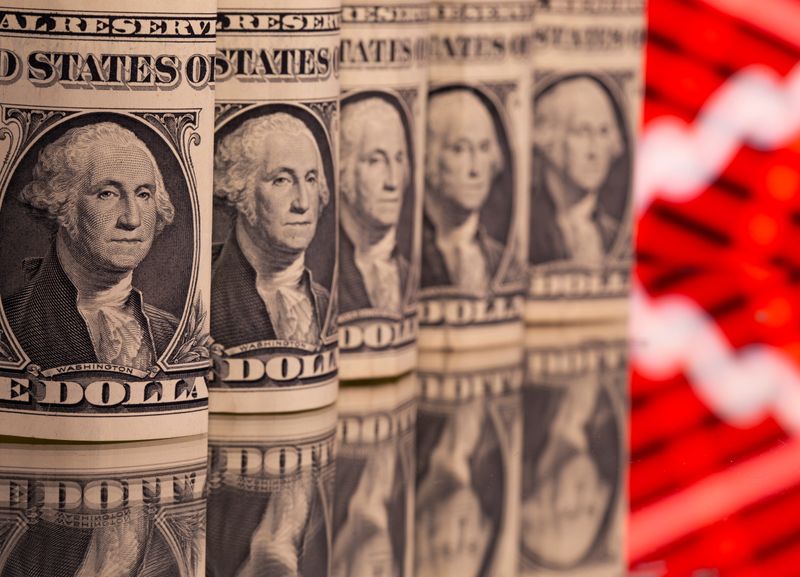NEW YORK (Reuters) – The U.S. dollar gained on Friday as U.S. government bond yields held near one-year highs, while riskier currencies such as the Aussie dollar weakened.
Yields have surged as an acceleration in the pace of vaccinations globally and optimism over improving global growth bolster bets that inflation will rise. That has also led investors to price in earlier monetary tightening than the Federal Reserve and other central banks have signaled.
The dollar move is “a function of what’s happening on the yields side,” said Jeremy Stretch, head of G10 FX strategy at CIBC World Markets. The 10-year yield briefly climbed above the S&P 500 dividend yield on Thursday, he noted, indicating “uncertainty that is writ large.”
The dollar index rose 0.59% to 90.847, its highest level in a week.
It gained against the yen, touching 106.69 for the first time since September.
The benchmark 10-year Treasury yield surged above 1.6% on Thursday for the first time in a year after a weak seven-year note auction. It was last at 1.45%.
U.S. yield increases have accelerated this month as Fed officials refrain from expressing concern about the yield gains.
“The Fed has not really hinted that that’s making them uncomfortable, so the bond market’s going to push that,” said Edward Moya, senior market analyst at OANDA in New York. “That’s really dictating this move in the dollar.”
Riskier currencies retreated. The Aussie fell 1.99% to $0.7713, after topping $0.80 on Thursday for the first time since February of 2018.
Marshall Gittler, head of research at BDSwiss, said the Australian dollar was underperforming despite the market signaling higher growth, likely because the country’s central bank’s yield curve control policy would restrain its bond yields from moving much higher. That, in turn, could limit the attractiveness of the currency.
The greenback is likely to continue to benefit from safe- haven flows if risk appetite continues to worsen, and emerging market currencies may be among the biggest losers.
“There’s a big, big concern that this reflation risk is going to get out of hand and that’s going to really pummel the emerging market currencies, and I think you’re going to see that investors are going to need to reassess their dollar positions,” said Moya.
Data on Friday showed U.S. consumer spending increased by the most in seven months in January, while price pressures were muted.
U.S. jobs data for February released next Friday is the next major economic focus.
Investors are also waiting on details of the U.S. fiscal stimulus bill, which is expected to be passed in the coming weeks.
The Democratic-controlled House of Representatives on Friday was poised to push through President Joe Biden’s $1.9 trillion coronavirus aid package, although it looked unlikely to be able to use the bill to raise the minimum wage nationwide.
The euro dipped 0.79% to $1.2078 after touching a seven-week high of $1.2244 on Thursday.
Bitcoin fell 0.32% to $46,946. Ethereum dropped 0.7% to $1,468.
(Additional reporting by Ritvik Carvalho in London; Editing by Dan Grebler and Andrea Ricci)






















